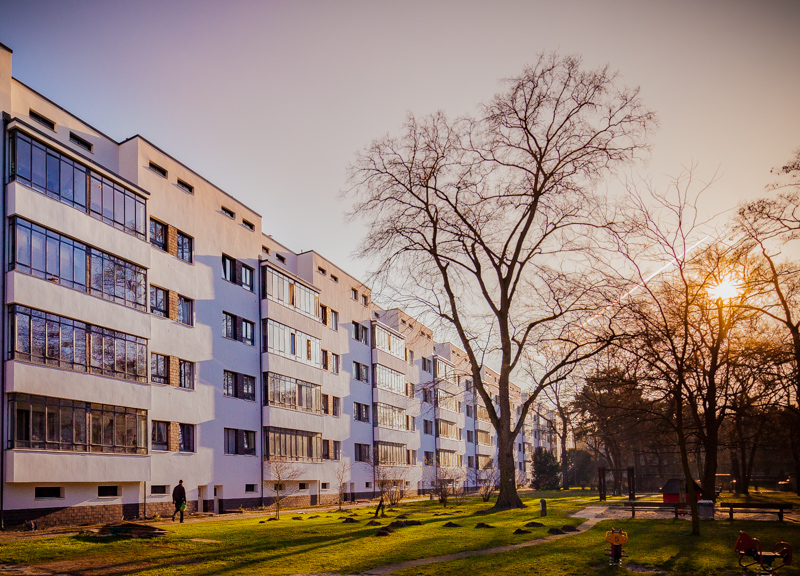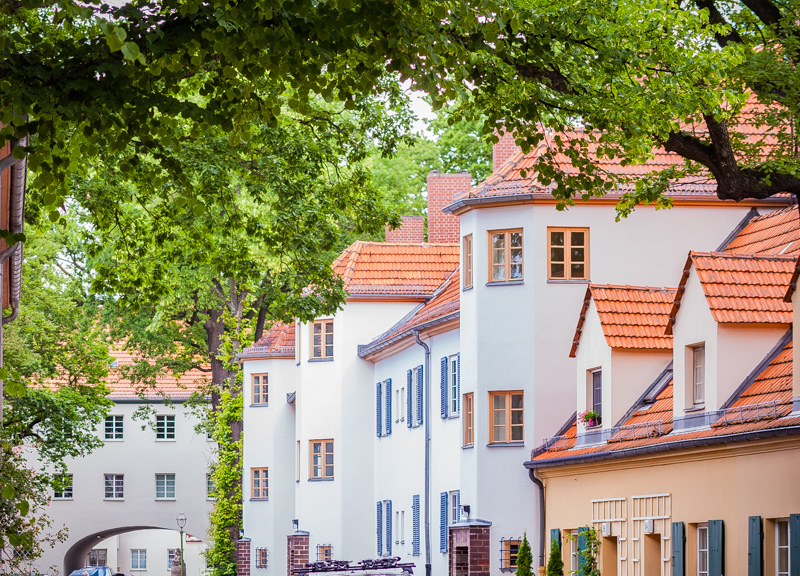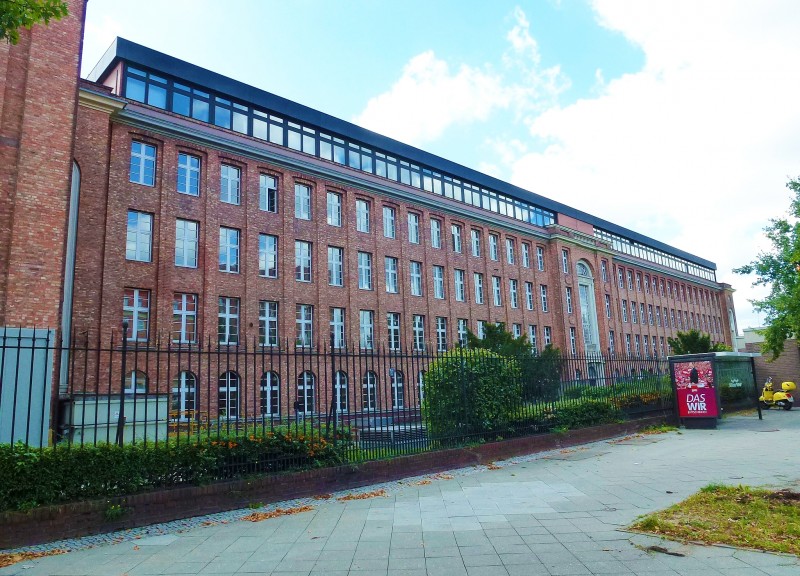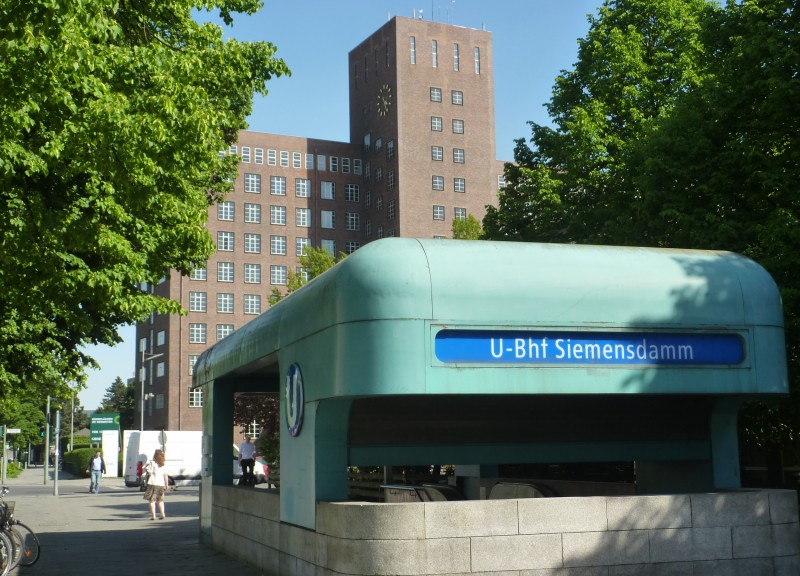Industrial culture in Spandau
-
 Ringsiedlung Gropius West (c) ChristianFessel.de
Ringsiedlung Gropius West (c) ChristianFessel.de -
 Siemensstadt (c) ChristianFessel.de
Siemensstadt (c) ChristianFessel.de -
 Siemensstadt Nonnendammallee / Foto: Fridolin freudenfett, Wikimedia Commons
Siemensstadt Nonnendammallee / Foto: Fridolin freudenfett, Wikimedia Commons -
 Bahnhof Siemensdamm / Foto: Gröschel Branding
Bahnhof Siemensdamm / Foto: Gröschel Branding
Droning, rattling, thundering – if there were a soundtrack for the Spandau of the past, it would be the sounds of countless machines and engines. The historical development of the borough is strongly marked by an industrial past whose traces can still be seen today.
With artillery workshops and factories for gunpowder, ammunition and cartridges, the Prussians made Spandau their armoury. On the island of Eiswerder, the former production halls of the royal pyrotechnic laboratory recall its explosive past. The Nazis also used the facilities, which had been shut down after the First World War, for massive arms production.
The history of the world’s biggest electrical company began in the Siemensstadt district. What started out in 1847 as the Siemens and Halske telegraph construction company soon made waves far beyond the European continent. From London to Calcutta and across the Atlantic to America, Siemens wired up the whole world.
From 1897 Siemens & Halske expanded their production on the area on Nonnendamm which became Siemensstadt. Distinctive industrial buildings such as the high-rise Wernerwerk, the Siemens Tower and the administration building were constructed. The large Siemensstadt housing estate is also famous and is one of six Berlin Modernist housing estates that form a UNESCO World Heritage Site.
BMW and Spandau also share a history. While the site still functioned as a supplier plant after the Second World War, in the late 1960s BMW moved its entire motorcycle production to Haselhorst. In 1969, the first Spandau-made motorbike rolled off the assembly line, and more than two million have been produced here since then.
The gigantic airship hangars in Staaken were where Spandau’s film industry, the hidden Hollywood on the Havel, flourished in the 1920s. Around a third of all German film productions were shot there, including Fritz Lang’s silent classic “Metropolis”. Today a control tower is the only reminder of the legendary Staaken film studios.
At a glance
Berliner Zentrum für Industriekultur (bzi)
Wilhelminenhofstraße 75a, 12459 Berlin
